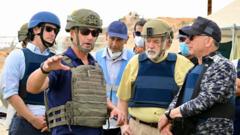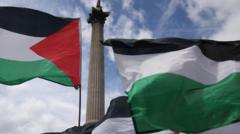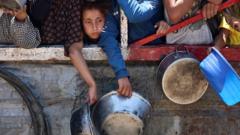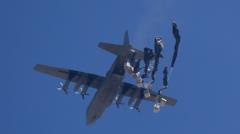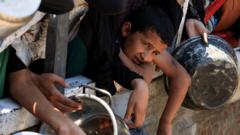New imagery from Maxar and Umbra Space has unveiled extensive damage to Iran's Natanz and Isfahan nuclear sites, along with missile complexes. Despite the destruction, the International Atomic Energy Agency reports no increase in radiation levels at these locations.
Satellite Imagery Sheds Light on Damage to Iranian Nuclear and Military Sites

Satellite Imagery Sheds Light on Damage to Iranian Nuclear and Military Sites
Recent satellite images reveal significant destruction at vital Iranian nuclear facilities and military bases following targeted strikes.
Recent satellite imagery analysis has illuminated the extensive damage inflicted on crucial Iranian nuclear and military infrastructures following recent strikes. Observations from Maxar and Umbra Space depict destruction at the Natanz nuclear facility and missile sites across the country, marking a significant escalation in hostilities.
The detailed images reveal damage to pivotal structures within the Natanz nuclear site, including the pilot fuel enrichment plant and an electrical substation. The International Atomic Energy Agency (IAEA) head, Rafael Grossi, confirmed that the portion of the facility producing uranium enriched up to 60% U-235 has been destroyed, emphasizing the implications for nuclear power and potential weaponry.
Verified visual evidence shows plumes of smoke resulting from the strikes. Military analyst Justin Bronk highlighted the use of penetrating munitions, such as GBU-31 and GBU-28, which are designed to penetrate fortified defenses. However, the IAEA reported no evidence of damage to underground facilities where much of the enrichment work occurs.
Additional IAEA reports indicated that four critical buildings at Isfahan were also affected, further compounding concerns over Iran's nuclear ambitions. Notably, the IAEA has not recorded any increases in off-site radiation levels at Natanz or Isfahan, suggesting that, while destructive, the strikes did not lead to a nuclear safety crisis.
Images from the Tabriz missile complex show damage to missile shelters, silos, and weapon storage areas, indicating a broader military impact. Similar damage has been observed near Kermanshah, with reports of burn marks and smoke plumes seen in the area. Further analysis revealed significant destruction at the Islamic Revolutionary Guard Corps (IRGC) Ghadir ballistic missile base near Tehran and extensive damage to IRGC radar installations in West Azerbaijan Province.
These developments in the Middle East underscore the ongoing tensions and escalated military actions that could have vast implications for regional stability and nuclear nonproliferation efforts.




